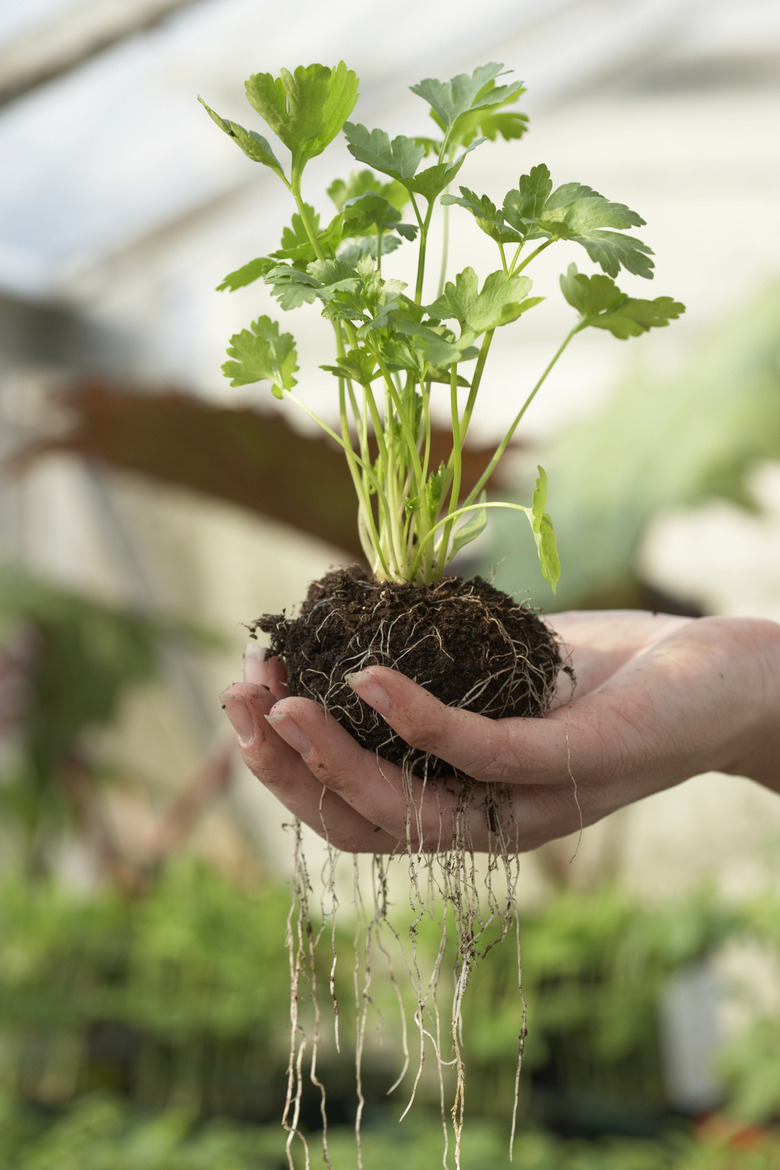The Advantages Of Geotropism In Roots
Although plants are not mobile like animals, plants do respond to stimulants that direct growth movement. Plant shoots, such as stems and leaves, grow toward light, a process called phototropism. Plant roots grow according to the pull of gravity, which is known as geotropism. Geotropism also aids plant shoots in upright orientation, as they grow in opposition to the downward pull of gravity. Root geotropism provides multiple advantages to a plant's vitality and survival.
Seed Germination
Seed Germination
The presence of gravity or centrifugal force ensures the first root that emerges from any plant seed, called the radicle, grows downward into soil. This eliminates any concern of proper orientation of the seed for germination. Regardless of the angle or potential "upside-down" sowing of seeds, geotropism ensures that wherever the radicle emerges, it will begin to grown downward. Turn a sprouting seed upside down and the radicle will naturally begin to curve back down as if guided by gravity. Downward growing roots increase the chances of encountering soil moisture to sustain future plant growth and development.
Anchorage
Anchorage
Geotropism guides plant roots to grown downward, or if growing horizontally in shallow topsoil, to occasionally branch and send some roots vertically downward. This creates structural anchorage and integrity of the plant, especially once upright stems and leaves occur. Anchorage is needed to orient photosynthesizing leaves to the sun, and not risk plant collapse from wind or rain. Not all plants develop a singular taproot, but instead create a branching fibrous matrix of roots. Geotropism guides these roots so that they do randomly grow upward and protrude from the soil surface.
Drought Avoidance
Drought Avoidance
When precipitation fails to occur in landscapes, the only moisture available to plants is from moisture at lower soil levels, or water traveling up from groundwater sources. Geotropism's downward-growing effect on roots ensures that plant root systems do not develop too shallowly at the soil surface, exposing the plant to fluctuations in surface soil moisture and seasonal temperatures. While not all roots need to grow straight downward, gravity guides roots to grow with the downward pull into soil layers that contain moisture and are not seasonally and arbitrarily affected by environmental conditions at the soil surface.
Chemical Properties
Chemical Properties
As much as gravity helps orient roots to grow downward, geotropism also is tied to the concentration and use of various plant chemicals, such as hormones. Auxin is one plant hormone that is distributed within plant tissues based on gravity. Auxin may be transported horizontally within the plant, but within tissues or cells, auxin pools in the bottom side. Auxin also is more abundant in roots, leading to cell elongation and continued root growth through the soil profile. Root cells are more sensitive to the presence of auxin than leafy shoots. Auxin, in concert with geotropism, ensures roots are stimulated to grow in a general downward direction away from the soil surface.
Cite This Article
MLA
Wright, Jacob J.. "The Advantages Of Geotropism In Roots" sciencing.com, https://www.sciencing.com/the-advantages-of-geotropism-in-roots-12604564/. 21 July 2017.
APA
Wright, Jacob J.. (2017, July 21). The Advantages Of Geotropism In Roots. sciencing.com. Retrieved from https://www.sciencing.com/the-advantages-of-geotropism-in-roots-12604564/
Chicago
Wright, Jacob J.. The Advantages Of Geotropism In Roots last modified March 24, 2022. https://www.sciencing.com/the-advantages-of-geotropism-in-roots-12604564/
